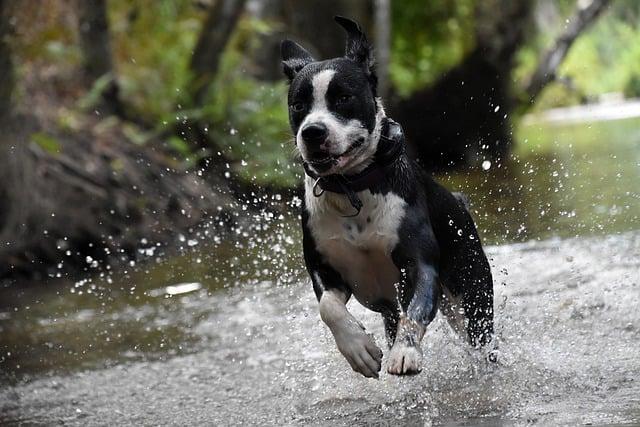Welcoming guests into your home is a delightful experience, but when your furry friend greets them with an enthusiastic jump, it can be a bit overwhelming for everyone involved. While dogs often jump to express excitement or seek attention, this behavior can be managed with patience and consistency. In this guide, we’ll explore effective strategies to gently train your dog to greet visitors with all four paws on the ground, ensuring a warm welcome that respects both your guests and your pet’s natural exuberance. Whether you’re a seasoned dog owner or new to the joys of canine companionship, these tips will help create a more harmonious home environment for all.
Understanding Why Dogs Jump on Guests
Understanding why our furry friends feel the need to leap at our guests is the first step toward managing this behavior. Dogs often jump on people as a form of greeting or to seek attention. It’s their way of expressing excitement and affection, especially when they haven’t seen someone for a while. This behavior can be more pronounced in puppies or younger dogs who are still learning social boundaries.
Several factors can contribute to this enthusiastic welcome. Dogs are naturally inclined to be at eye level with humans to feel connected, and jumping is their attempt to achieve that. Additionally, they might have learned that jumping results in some form of interaction, whether it’s positive or negative. Here are a few reasons why dogs might jump on guests:
- Excitement: Dogs are often just thrilled to see new faces.
- Attention-seeking: Even a push or a verbal cue can be seen as attention.
- Lack of training: Dogs may not have been taught appropriate greeting behaviors.
Understanding these motivations helps in addressing the root of the behavior, making it easier to implement effective strategies for a calmer, jump-free welcome.

Creating a Welcoming Environment with Boundaries
One effective way to manage your dog’s enthusiasm is by establishing clear boundaries while maintaining a friendly atmosphere. Start by training your dog to understand the “sit” or “stay” command. When guests arrive, use these commands to encourage your dog to remain calm and composed. Consistency is key, so practice these commands regularly, even when you don’t have visitors.
- Reward Good Behavior: Use treats or affection as positive reinforcement whenever your dog follows the command and stays seated.
- Ignore Jumping: If your dog starts to jump, gently turn your back and avoid giving attention. This signals that jumping won’t get them what they want.
- Use a Leash: Initially, you might find it helpful to keep your dog on a leash when guests arrive. This gives you more control and helps redirect their excitement.
By establishing these boundaries, you’re not only teaching your dog good manners but also creating a harmonious environment for everyone involved. Remember, patience and persistence are your allies in this training journey.

Training Techniques to Discourage Jumping
To help your furry friend learn to greet guests politely, focus on consistent training methods that encourage calm behavior. Begin by teaching your dog the “sit” command as an alternative to jumping. Consistency is key here; practice this command daily and reward your dog with treats and praise when they respond correctly. Gradually introduce distractions, such as a friend entering the room, to reinforce the behavior under different circumstances.
- Ignore the jumping: When your dog jumps, turn your back and avoid eye contact. This shows that jumping does not earn them attention.
- Reward calmness: Praise and reward your dog when they remain seated or calm as guests arrive. This positive reinforcement encourages them to repeat the behavior.
- Use a leash: Keep your dog on a leash during initial training sessions with guests. This gives you control and allows you to guide them into a sitting position.
- Teach “off”: Use a firm but gentle command like “off” when they jump, and guide them back to a sitting position, rewarding them once they’re calm.
By integrating these techniques into your daily routine, you’ll create a structured environment where your dog can thrive and feel confident in their interactions with guests. Remember, patience and persistence are your allies in fostering positive behavior.

Positive Reinforcement: Encouraging Calm Greetings
Transforming your dog’s exuberant greetings into calm, polite welcomes is all about using positive reinforcement. When your dog exhibits the desired behavior, like keeping all four paws on the ground, immediately reward them. Use treats, affection, or their favorite toy as a way to say, ”Yes, this is what I want!” Consistency is key, so ensure every family member and guest is on board with this training approach.
- Ignore jumping: Turn away and avoid eye contact until your dog calms down.
- Reward calmness: As soon as they are calm, offer a treat or a kind word.
- Teach an alternate behavior: Encourage them to sit or stay, rewarding this behavior instead.
- Practice regularly: Reinforce these behaviors during daily interactions, not just when guests arrive.
Remember, patience and positivity will lead to a harmonious home where your furry friend greets everyone with gentle enthusiasm.

